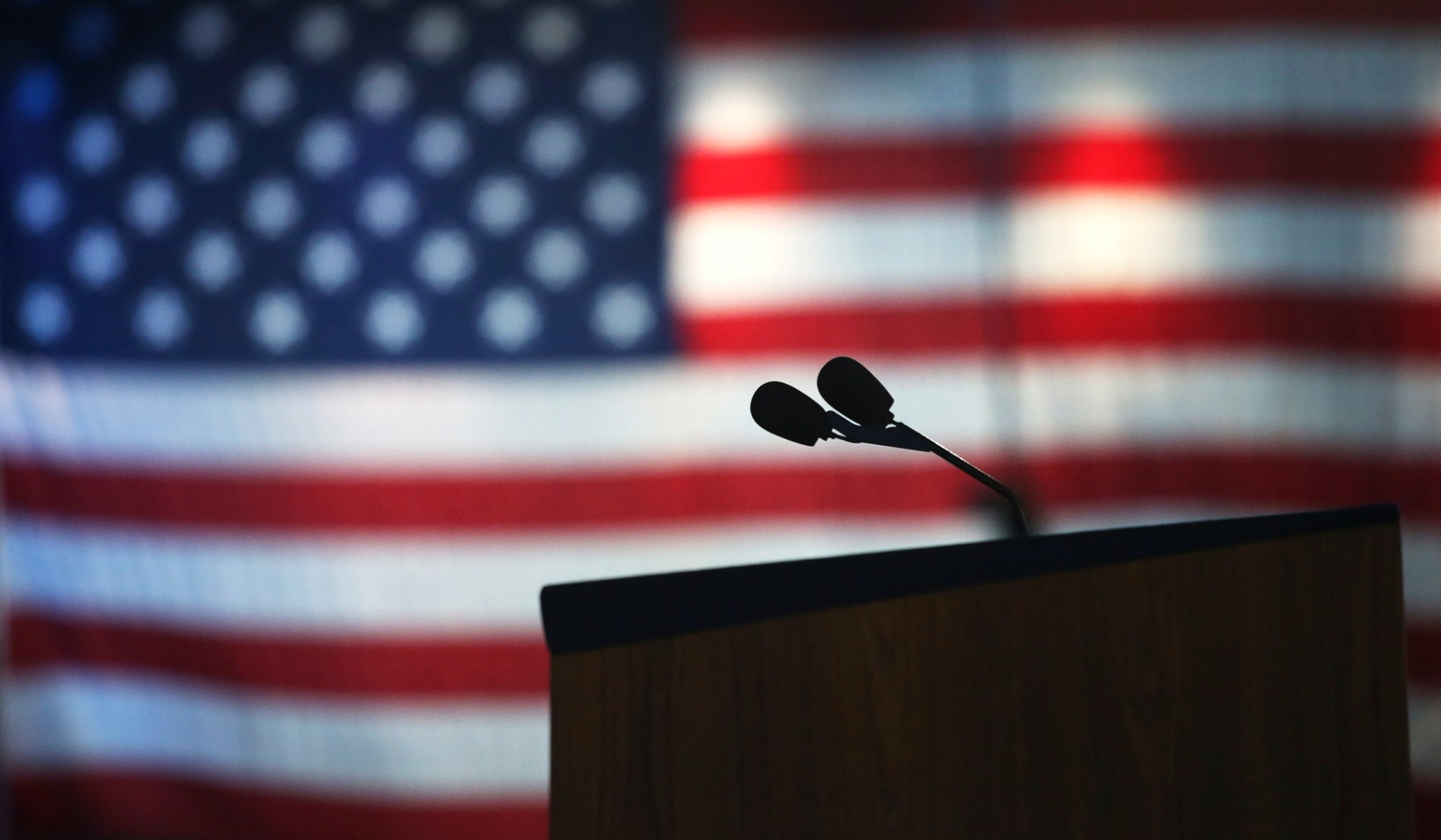American libertarianism has become a useless, purely performative sort of politics. Many libertarians I know seem blinded to the fact that the American social contract has fundamentally changed in character. At least since the New Deal, the political reality is that government involvement in our lives has increased in irreversible ways. But while libertarianism has become a form of unhelpful critique, liberty remains as vital as ever before. If we want to fix the most broken areas of our society, such as criminal justice, education, and healthcare, we must embrace policy solutions that mirror the competition of ideas that defines a free society. This means transparency and accountability. Wherever government is involved, we need systems that allow governing ideas to compete. Our rules need clear metrics, decision-makers need the freedom to experiment, and we must reward their successes and quickly eliminate failures.
The philosophy of liberty as generally understood by America's founding generation — including all it implies about speech, property, and other natural rights — should always be a vital part of the American identity. Libertarians of every age have understood that the wisest political orders must safeguard basic freedoms.
Liberty forces us to take personal responsibility for our decisions in the knowledge that each of us is the author of our own life. It is the foundation of our moral culture. Liberty is also the basic condition for aesthetic and cultural progress. “Experiments in living” produce the brilliant variety of human ingenuity and expression on display in the free world. Finally, liberty allows people to innovate and compete to deliver superior goods and services, which creates prosperity. If entrepreneurs are free to fail or to succeed in the marketplace of ideas, and entitled to the fruits of their labor, talented individuals will devise beautiful new ways to enrich the lives of others.
Too few people today understand why the word "LIBERTY" is inscribed on our coinage and our identity as a nation. Though some mock liberty as an outdated or abstract concept, it is as central to the health of our civilization as ever before.
But liberty is not enough. And I no longer call myself a libertarian.
The philosophy of liberty is ultimately a philosophy of restraint. It explains what government shouldn't or can't do. In libertarian theories such as Robert Nozick’s, most of the functions of modern government vanish in favor of a “night watchman state” so minimal that one would be hard pressed to find a single real example in human history.
In today's complex world, most Americans agree that the government will play a critical role in our economy, for example in education, healthcare entitlements, and the provision of a social safety net. Despite this basic reality, there are hundreds of thousands of smart libertarians on the sidelines griping at their TV screens about government dysfunction. Too many libertarians are shouting "no" instead of trying to help improve our society.
These “get off my lawn” libertarians convulsively reject any form of state activity. You see them in Congress, where Tea Party and Freedom Caucus Republicans grandstand and obstruct policy rather than fix our government. You probably even know one or two people who are so blinded by their laissez-faire ideology that they can’t recognize good policy when it’s staring them in the face. Let’s go over a quick example to teach them the value of positive policymaking.
Until about 50 years ago, many of our fellow citizens were still dying because dialysis machines were scarce and unaffordable. As a society, we decided that nobody should die of preventable kidney failure, and we decided to pay for it. In 1972 President Nixon and a bipartisan Congress amended the Social Security Act to say that government would cover dialysis as a remedy to end-stage renal disease for any American who needed it.
The knee-jerk reaction from the libertarian right is that government shouldn’t be involved in healthcare at all. Your libertarian friend might interject: “In a wealthier society charity would pick up all these costs more efficiently.” But let’s be realistic: our country will never get rid of our system of state-sponsored healthcare. Even were such a thing possible, many might die in the transition period. The political reality in the US today is that we must continue paying for end-of-life kidney care for those who can’t afford it. Anything else is disgraceful.
The better question is: why does dialysis cost taxpayers well over $35 billion annually, or a full 7% of the Medicare budget? The answer is that the federal government is willing to sponsor lifesaving care for people experiencing severe kidney failure, but not willing to sponsor preventive treatments that could effectively keep Americans from progressing into kidney failure. Our government accidentally created an incentive against preventive treatment, and even worse, against technological and medical innovations that could improve our ability to address early-stage kidney disease!
Fortunately, this is a problem we can fix. Even a libertarian should agree that if government is already paying for end-of-life care, it should certainly cover preventive measures that keep patients healthy instead of shackling patients to grim dialysis clinics. Imagine if Medicare paid for diagnostic screenings well in advance of kidney failure, and reimbursed providers for keeping early-stage patients from sliding into end-stage renal disease. We would immediately unleash innovations in preventive medicine that would save billions of dollars and keep hundreds of thousands of people from passing the point of no return![1]
Unfortunately, the hardened, dogmatic form of libertarianism that one often encounters in America today adds little to our political discourse. But an optimistic creed which draws on the lessons of liberty can improve American government in powerful ways and tackle major problems in our country.
In a society governed by the rule of law, individual freedom typically finds expression in a market setting where entrepreneurs peacefully compete to produce superior goods for others. A free market is a kind of “spontaneous order” which channels our acquisitive drives and instincts for glory towards service. As Albert Hirschman argued, free markets transform the sin of avarice into a civilizing virtue. Wouldn’t it be great if we steered auri sacra fames towards solving challenging social problems typically addressed by government?
Any great policy does three things: it creates a clear but general incentive for government or private sector actors, it transparently tracks the performance of those actors, and then it holds them to account for their successes or failures. Rather than prescribing procedures or setting dozens of intermediate goals, policies should outline ultimate metrics, and give people creative license to pursue these metrics in the ways they judge best. As Philip Howard puts it, “human responsibility is the oxygen of accomplishment.” Rewarding entrepreneurs and government employees for successfully achieving specific outcomes — such as preventing the escalation of kidney disease — maximizes freedom and creates the conditions for bottom-up competition in the provision of public goods. Dialysis is just one example. Consider two others:
Criminal justice. We incarcerate seven times as many people as we did in the 1970s, and about 70% of people reoffend within three years of their release from prison. We know that certain jails, prisons, and re-entry departments are better than others at rehabilitating offenders, but we reward them all with the same fixed fees for supervising their wards and carrying out a thousand minor procedures.
What if instead of paying our corrections officers to “warehouse” detainees we incentivized them to successfully help people reintegrate into society? In this new paradigm, corrections budgets would expand for facilities, departments, and counties that successfully reduce their return to incarceration rates. This kind of transparent rewards system would motivate state employees to iterate and figure out what can really reduce our corrections population while also reducing crime in our communities.
This model works because it harnesses the creativity and free judgment of corrections officers towards achieving a valuable social outcome. We’ve seen it work in my home state of California, which implemented exactly this model for felon probationers in 2009. As soon as the bipartisan law passed, California probation departments radically shifted their cultures and began behaving like entrepreneurs: experimenting with cognitive behavioral therapy, education, and other rehabilitative techniques to see how they could most effectively drive down recidivism rates.
In the past decade this institutional shift has steered roughly 100,000 probationers away from prison, saving state taxpayers over a billion dollars. Men and women who might have wound up in prison have been able to build lives outside of our corrections system. Imagine if the rest of American criminal justice was free to innovate and improve in the same way!
Higher education. Elizabeth Warren, Bernie Sanders, and others are loudly calling for the federal government to forgive some or all of the $1.5 trillion in student loans outstanding in this country. But the reason we’re in this mess is that our colleges and universities are not preparing American students for the kinds of successful careers that would allow them to pay off their student debt.
The federal government disburses nearly $100 billion in Title IV student loans per year, and nearly another $30 billion in grants to colleges and universities. This massive aid package flows to institutions of higher learning regardless of whether their students succeed or fail in the workforce.Colleges and universities are completely unaccountable, and alumni salary data has only recently become available. Is it any wonder that tens of millions of people are struggling to pay off their student loans?
To a free-thinking entrepreneur who appreciates market incentives, it’s obvious that we should make Title IV funding contingent on the performance of our colleges and universities. Policymakers typically describe “performance” in terms of graduation or degree completion rates. But imagine if colleges and universities were rewarded with more aid and more scholarship students on the basis of the real earnings of their graduates.
In this world, schools would compete furiously to figure out how to best advance the careers of their students. They would address quantified skills gaps by focusing on vocational training, partner with large corporations in need of new recruits, offer classes in the evenings when full-time workers and single moms can attend them, and try out new blends of online and physical instruction. Instead of allowing accreditation agencies to decide what schools can and can’t teach, policymakers should reward schools for producing ultimate results based on metrics (like market salaries) that can’t be gamed.
There are obviously nuances — this kind of proposal would have to adjust rewards for the fact that some students are more likely to attain high-paying jobs than others, as well as institutions like arts colleges for which this model doesn’t make sense. But the basic philosophy is clear: give colleges and universities the liberty to experiment with different pedagogies and reward them for the result we care about most.
There are dozens of other non-partisan reforms to pursue in our country, at the federal, state, and local levels. Libertarians need to stop griping and start harnessing the best and brightest in the country to go do them. Our group, the Cicero Institute, is working with policymakers on both sides of the aisle to bring about reforms in healthcare, housing, and criminal justice that would help tens of millions of people and save tens of billions of dollars.
As Americans, we hold many values in common. The challenge is to promote sensible laws and institutions that bring about these shared values. We must ask: how can we expand opportunities for Americans to provide for ourselves and our families? How can we fight for reasonable costs of living instead of unaffordable medical bills, housing rents, and student loans? How can we prevent cronyism and corruption at the taxpayer’s expense? And how can we address the legacies of inequality that halter working-class citizens and threaten the unity of our republic?
Libertarians should not abandon bold, controversial ideas such as replacing our welfare state with direct “universal basic income” to the poor, legalizing most drugs, liberalizing our immigration policy, or drastically simplifying the tax code. But they should first apply their perspective to solve problems on which we all agree. Let’s channel our competitive drives and national genius into positive-sum projects in the service of others, whether in healthcare, criminal justice, education, or other areas of American life.
A more earthy, realistic American political philosophy will insist on the value of individual liberty while also recognizing that government will continue to be an instrument for solving social challenges. We must allow entrepreneurs and government employees to compete on the marketplace of ideas, transparently track their performance, and reward those who succeed. On a trellis of clear incentives, the vine of good governance may grow freely and flourish.
Our basic liberties have allowed a meritocracy of ideas to prevail in our country and made possible the past two centuries of economic growth and political progress. We can remain faithful to the insights that inspired our founding generation while also being honest about the realities of 21st century government. What we can learn from libertarians is something that libertarians themselves seem to have missed: that the philosophy of liberty is both idealistic and pragmatic.
When we give entrepreneurs the freedom to innovate and reward them for delivering the social outcomes we care about, they deliver beautiful and unpredictable solutions. We can harness the energy of our great entrepreneurial culture to improve the lives of the least well-off and allow the best ideas to scale. We’re the best in the world at building innovative companies that transform lives across the globe. Let’s bring the same energy to championing policies that serve the American public in powerful, measurable ways.
The duty of the modern libertarian is to stop grousing about American government and start fixing it. If we remain true to the principle of LIBERTY and sustain a healthy respect for the creative energies of free people, we can transform our government and improve the lives of Americans across the country.
[1] As we have written elsewhere, preventive and in-home care models for patients with chronic kidney disease have been successful at lower costs. Medicare should embrace these models.












